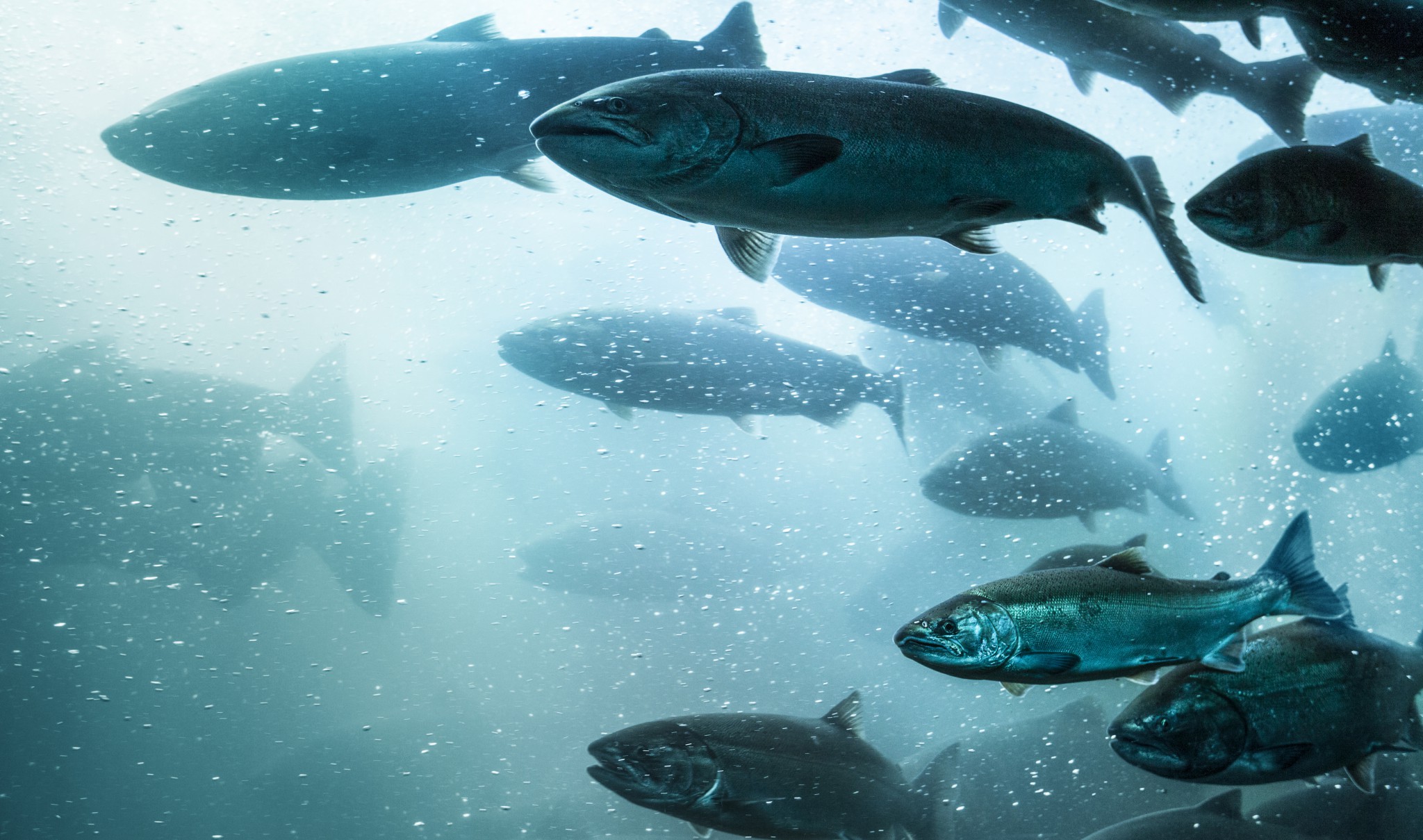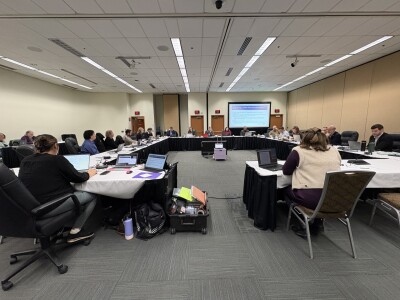If the headline on this piece seems contradictory, that’s the idea. There shouldn’t be much conflict between fish and food because fish ARE food, and yet that’s the situation setting up in drought-stricken California. A new proposal would attempt to protect fish — including king salmon — by keeping water in the river system that would otherwise be diverted to agriculture or for other human uses.
King salmon in the Lower Stanislaus River in California's Central Valley. U.S. Fish and Wildlife Service photo.The Sacramento Bee reported on the plan last week: “To protect endangered fish at critical parts of their life cycle, regulators proposed leaving hundreds of thousands of additional acre-feet of water in the San Joaquin River system. As little as 20 percent of the river now flows unimpeded to the Sacramento-San Joaquin Delta, and regulators said they want the so-called 'natural' flow raised to at least 30 percent and perhaps as high as 50 percent.”
The intricacies of California water politics are well above my pay grade, but it struck me as an interesting policy study. Agriculture is a heavily subsidized industry, especially in California. It’s no surprise that industry attracts major political support — according to the California Department of Agriculture, more than a third of U.S. vegetables and two-thirds of the country’s fruits and nuts are grown on the state’s 76,400 farms.
Fishermen don’t enjoy the same subsidies or safety nets afforded to their farmer brethren, a fact to which California Dungeness crabbers could attest in spades after their most recent disastrous season. NF editor-in-chief Jessica Hathaway addressed that imbalance with clarity in her Pilothouse Log for the Summer 2016 North Pacific Focus.
Back to this California water plan. The debate over water use in the Golden State has been framed in these “fish vs. food” terms before.
In July 2009, then Congressman George Radanovich protested water restrictions for agriculture imposed to protect the endangered delta smelt, issuing a statement that included the comment “when it comes to water policy, humans come before fish.”
This new plan has already reignited a similar conversation — Mike Wade of the California Farm Water Coalition was quoted in the Sacramento Bee story warning about impacts to agriculture “with no guarantee the redirection of water will help the fish.”
It’s a narrow view. It pits one resource against another as though they are mutually exclusive. I don’t read this as a plan to “help the fish.” It’s not about helping the fishermen either, though it could certainly benefit both long term. I read this as California finally being forced to reckon with what years of redirected water combined with drought hath wrought.
Taking corrective action to address a resource shortage following years of bad (or at least uninformed) policy? That sounds like a situation fishermen know something about.
Addressing a shortage sometimes means short term pain to set a course for long term benefits. Thinking critically about the way water is used in California will benefit more than salmon or smelt. It seems that regulators are finally beginning to take stock of the entire ecosystem tied to the San Joaquin River and its tributaries, which the Sacramento Bee journalists described as “one of California’s most overused river systems.”
There’s no denying that cutting water for agricultural needs would affect output and hurt some farmers. There’s no guarantee that regulators will get the balance right immediately, or ever. Climate change is helping to turn the old formulas for resource allocation inside out — another thing that fishermen across the country contend with on a daily basis.
Rather than one thing vs. another, the California proposal shows how closely these issues and groups are tied, and how much they could stand to learn from each other.







